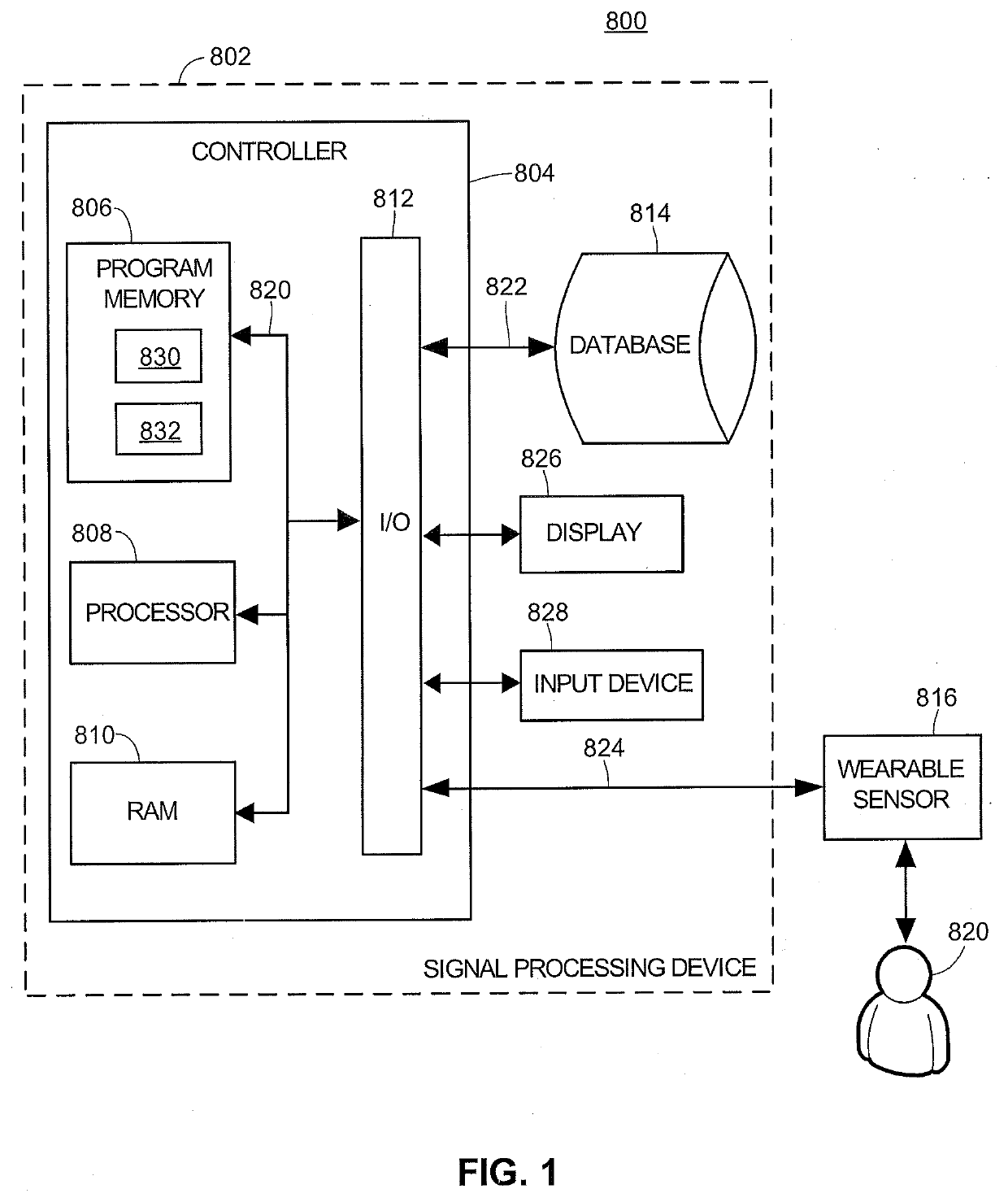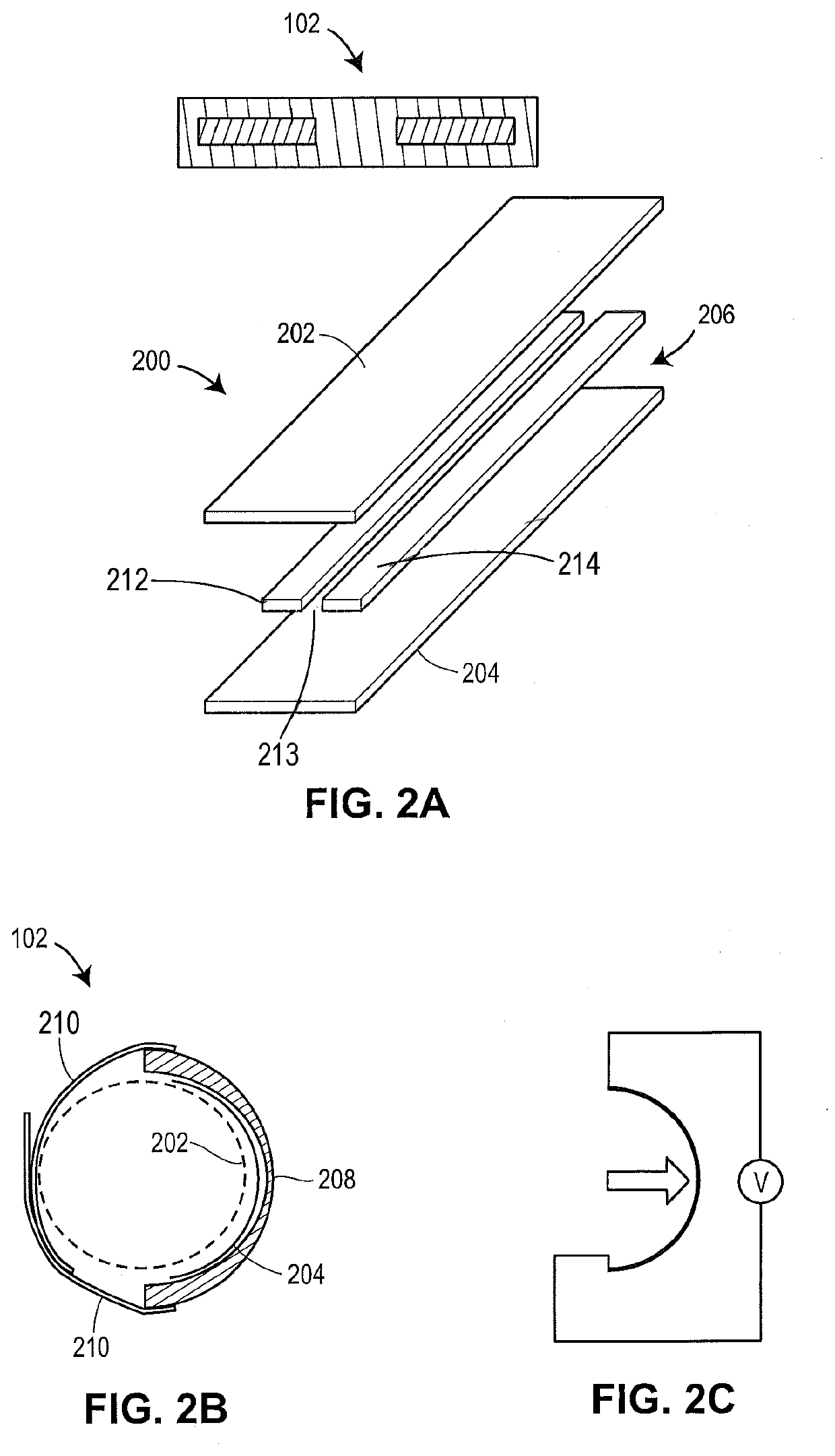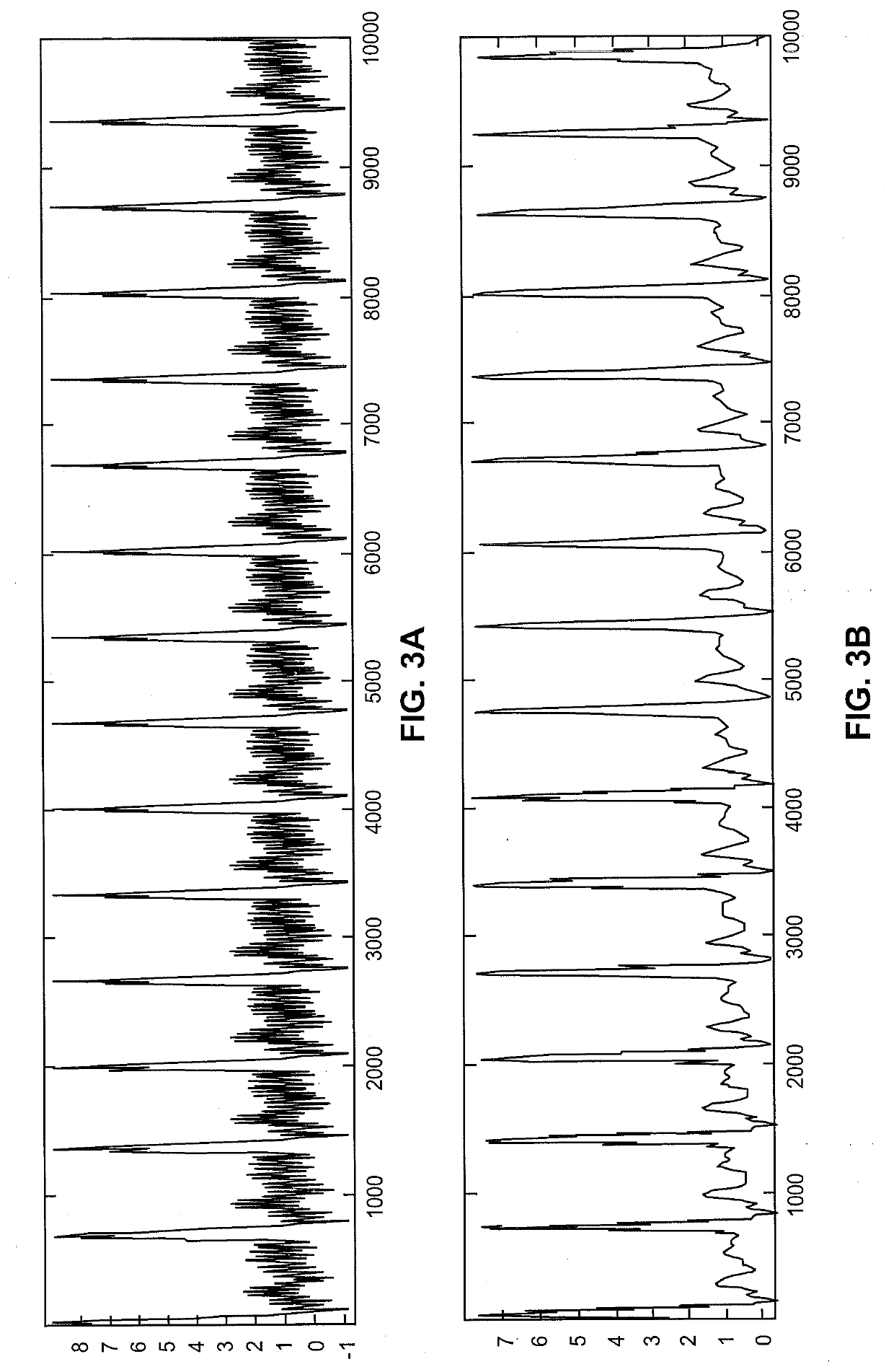Estimation of peripheral vascular resistance using a miniature piezoelectric sensor
a piezoelectric sensor and peripheral vascular technology, applied in the field of wearable health related monitors, can solve the problems of inability to use non-invasive continuous monitoring, inability to accurately track vascular resistance, and inability to use portable and low-power devices or systems that can be used for non-invasive continuous monitoring. achieve the effect of accurate tracking of vascular resistan
- Summary
- Abstract
- Description
- Claims
- Application Information
AI Technical Summary
Benefits of technology
Problems solved by technology
Method used
Image
Examples
Embodiment Construction
[0060]The present techniques provide devices and methods for measuring and monitoring blood flow dependent measurements over a sensing region of a subject, such as over a finger or other peripheral arterial region. Example devices include wearable sensor devices having two or more sensors of different types. For example, these wearable sensor devices may include a piezoelectric pressure sensor and a pulse-oximetry sensor for measuring blood saturation levels and operating as a pulse plethysmography (PPG) sensor with corresponding output. As used herein, pulse-oximetry sensors refers to any pulse-oximetry sensors and any other suitable biophotonic sensors.
[0061]FIG. 1 is an example block diagram 800 illustrating the various components used in implementing an example embodiment of a piezoelectric cardiovascular monitoring system discussed herein. A signal-processing device 802 (or “signal processor”) may be coupled to a patient 820 via one or more wearable sensors 816 (or a “wearable ...
PUM
 Login to View More
Login to View More Abstract
Description
Claims
Application Information
 Login to View More
Login to View More - R&D
- Intellectual Property
- Life Sciences
- Materials
- Tech Scout
- Unparalleled Data Quality
- Higher Quality Content
- 60% Fewer Hallucinations
Browse by: Latest US Patents, China's latest patents, Technical Efficacy Thesaurus, Application Domain, Technology Topic, Popular Technical Reports.
© 2025 PatSnap. All rights reserved.Legal|Privacy policy|Modern Slavery Act Transparency Statement|Sitemap|About US| Contact US: help@patsnap.com



